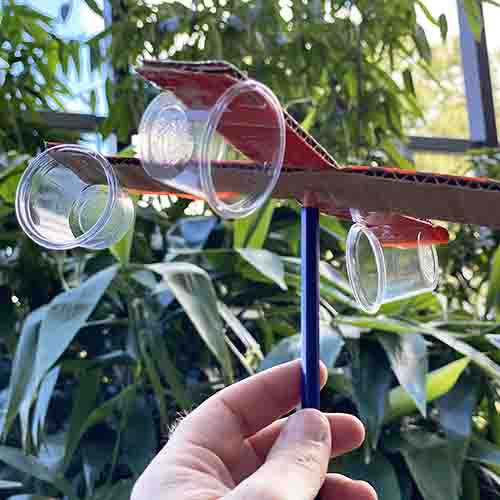How to Preserve and Look After Your Anemometer to Make Sure Longevity
How to Preserve and Look After Your Anemometer to Make Sure Longevity
Blog Article
Anemometers Introduced: Comprehending Their Relevance in Environmental Monitoring and Precaution
The duty of anemometers in environmental surveillance and precaution is commonly underestimated, yet their value is indisputable. These instruments have a lengthy history rooted in scientific query and technical improvements, evolving to become crucial tools in different areas. From weather forecasting to aeronautics safety, anemometers play a vital duty in offering exact information that informs decision-making processes and boosts overall safety. Comprehending the complexities of anemometers introduces a globe of vital understandings that are essential to our understanding of the setting and the steps we require to make sure safety.
Background of Anemometers
The development of anemometers can be traced back to the old people where simple wind measuring gadgets were initial used. These early wind measurement tools laid the structure for the development of more innovative anemometers gradually. Among the earliest recognized anemometers was the hemispherical cup anemometer designed by Leon Battista Alberti in the 15th century. This layout consisted of 4 hemispherical mugs that accumulated wind energy, providing a dimension of its strength based upon the rate of rotation.
Over the years, improvements in modern technology led to the growth of even more modern-day anemometers, including ultrasonic anemometers and laser Doppler anemometers, using raised precision and efficiency in determining wind speed and instructions. The background of anemometers showcases an exceptional journey of development and progress in the area of weather forecasting.
Types of Anemometers
Throughout the area of weather forecasting, different sorts of anemometers have been created to properly gauge wind rate and instructions. One of the most common kind is the mug anemometer, which consists of three or 4 mugs installed on straight arms that rotate with the wind. As the mugs rotate, the speed at which they turn is straight symmetrical to the wind speed. One more extensively utilized type is the vane anemometer, which includes a tail or fin that aligns itself with the wind direction. This alignment enables the tool to determine the wind instructions. Sonic anemometers utilize ultrasonic signals to measure wind speed and instructions accurately. They are frequently used in study applications due to their high accuracy. Hot-wire anemometers run based upon the principle that the cooling effect of wind on a warmed cord is proportional to the wind rate. These anemometers appropriate for gauging reduced wind rates with high precision. Each type of anemometer has its staminas and is chosen based on the certain requirements of the monitoring task available.
Applications in Weather Forecasting
Having actually gone over the different kinds of anemometers made use of in weather forecasting for determining wind rate and instructions, it is necessary to explore their sensible applications in the area. Anemometers play a crucial duty in weather forecasting by supplying accurate and real-time data on wind conditions (anemometer). Meteorologists use anemometers to check wind speed and instructions to forecast weather patterns, concern warnings for serious weather events like tornados, twisters, and storms, and analyze weather for air travel safety
In meteorology, anemometers aid in comprehending neighborhood and regional wind patterns, which Bonuses are essential for anticipating weather changes and determining climatic fads. These devices are also utilized in research to study microclimates, metropolitan heat islands, and air pollution dispersion. Additionally, anemometers are utilized in farming to optimize plant monitoring practices, such as irrigation and pesticide application, based upon wind problems.
Value in Aeronautics Safety And Security
An important facet of ensuring aeronautics security exists in the meticulous tracking of wind conditions using anemometers. Anemometers play a vital function in aeronautics by providing real-time information on wind rate and direction, helping pilots in making informed decisions during trip, liftoff, and landing. Unpredictable and strong winds can substantially affect airplane procedures, making it crucial for aeronautics authorities to rely upon exact wind dimensions to guarantee the safety and security of passengers and staff.

In the dynamic atmosphere of aviation, where even minor modifications in wind speed and instructions can have profound effects, anemometers stand as essential tools for promoting protected and risk-free air traveling.
Role in Environmental Research Study
Anemometers play an essential function in ecological study by providing vital information on wind speed and direction. By accurately gauging wind features, anemometers help researchers assess the movement of contaminants in the air, evaluate the effect of commercial emissions, and predict the spread of pollutants in the environment.


Conclusion
To conclude, anemometers have played an essential role view website in environmental monitoring and security steps. With an abundant history and various kinds readily available, these tools have been commonly used in meteorology, aviation security, and ecological research. Recognizing the importance of anemometers is vital for properly measuring wind speed and instructions, which is essential for forecasting weather patterns, guaranteeing secure aeronautics operations, and conducting environmental research studies - anemometer. Their contributions to these areas can not be ignored.
One of the earliest known anemometers was the hemispherical cup anemometer invented by Leon Battista Alberti in the 15th century. Over click this the years, developments in modern technology led to the development of more contemporary anemometers, including ultrasonic anemometers and laser Doppler anemometers, providing enhanced accuracy and performance in determining wind speed and direction. Hot-wire anemometers run based on the concept that the cooling impact of wind on a warmed wire is symmetrical to the wind rate. Meteorologists use anemometers to monitor wind speed and instructions to forecast weather patterns, issue warnings for serious weather occasions like twisters, cyclones, and storms, and analyze climatic conditions for aviation safety.
Recognizing the significance of anemometers is vital for properly measuring wind rate and direction, which is important for forecasting weather patterns, making sure safe aviation operations, and performing ecological studies. (anemometer)
Report this page